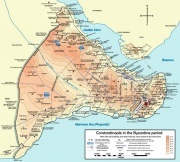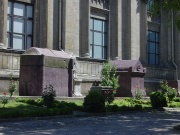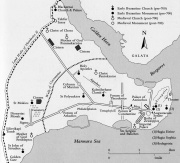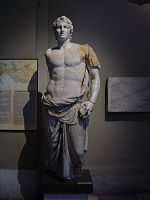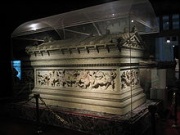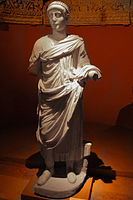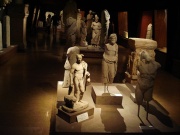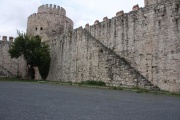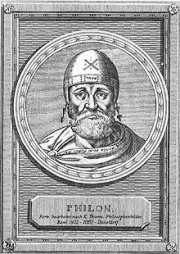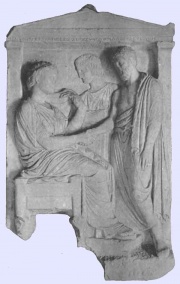Byzantium
Under construction
Byzantium [Βυζάντιο] is an ancient Greek colony of the city of Megara in Attica first founded at 667 BCE by Byzas. The city was located in the Golden Horn on the European shore of the Bosporus straight. In the course of time the place was selected by the Emperor of Rome Constantine I the Great as the New Rome capital city of the Roman Empire at 330 AD/ CE. After the collapse of the Western Roman Empire the city [Constantinople now] survived as the capital of the Eastern Roman Empire that recovered the former territories of the Roman Empire and lasted as Byzantine Empire until 1453 AD/ CE the year that fell to the Ottoman Turks. The city was renamed as Istanbul and currently covers both shores of the Bosporus strait.
Also:
http://en.wikipedia.org/wiki/Byzantium
http://en.wikipedia.org/wiki/Aristophanes_of_Byzantium
http://en.wikipedia.org/wiki/Epigenes_of_Byzantium
http://en.wikipedia.org/wiki/Philo_of_Byzantium
http://en.wikipedia.org/wiki/Homerus_of_Byzantium
http://en.wikipedia.org/wiki/Python_of_Byzantium
http://www.historyworld.net/wrldhis/plaintexthistories.asp?historyid=ac59
http://www.agt.si.edu/cultural_history/turkey/hellenistic-roman-byzantine_tr.html
http://www.livius.org/cn-cs/constantinople/byzantium-greek.html
